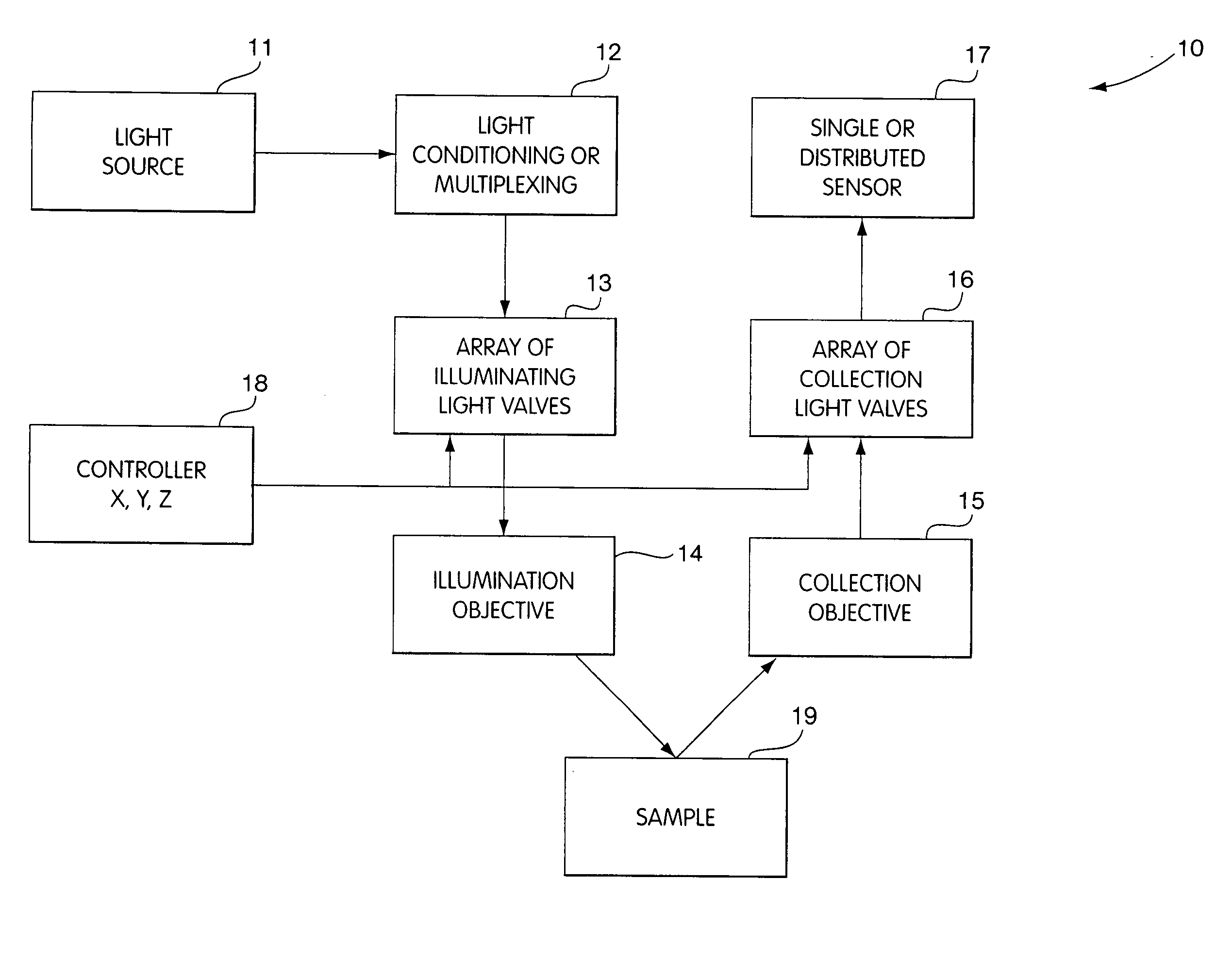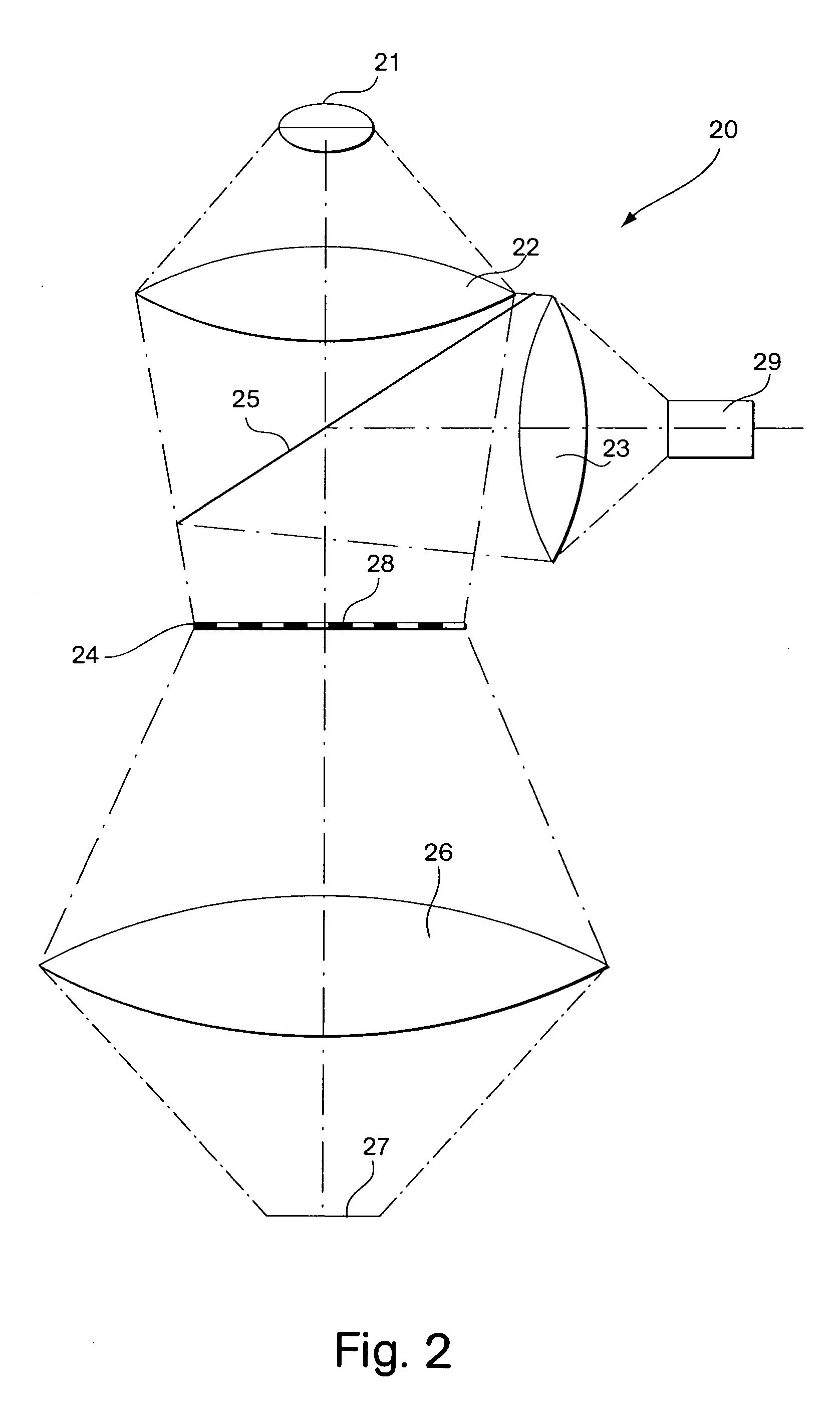Analysis of volume elements for tissue characterization
a volume element and tissue technology, applied in the field of volume element analysis for tissue characterization, can solve the problems of inability to characterize tissue based on representative samples, inability to perform tissue biopsy and laboratory analysis, and inability to perform tissue biopsies
- Summary
- Abstract
- Description
- Claims
- Application Information
AI Technical Summary
Benefits of technology
Problems solved by technology
Method used
Image
Examples
Embodiment Construction
[0052] In FIG. 1 we show a generalized schematic volume probe array, 10, whose function is to collect data from a plurality of points in a target sample. The system generally includes an appropriate light source 11, whose light output is conditioned and may be multiplexed in block 12 to create a plurality of light sources to be relayed to an array 13 of light valves. These light valves can act as illuminating field stops or aperture field stops, and only one valve is open at a given time, thus providing for sequential illumination of volume elements in sample 19. The light emanating from each light valve is then directed to a targeted volume element in the sample 19 with an appropriate illumination objective 14. In some embodiments, a single objective lens is used, while in other embodiments, we incorporate an array of objective microlens having the same periodicity as that of the light valve array.
[0053] Responses from each targeted volume element in the form of light emanating fr...
PUM
 Login to View More
Login to View More Abstract
Description
Claims
Application Information
 Login to View More
Login to View More - R&D
- Intellectual Property
- Life Sciences
- Materials
- Tech Scout
- Unparalleled Data Quality
- Higher Quality Content
- 60% Fewer Hallucinations
Browse by: Latest US Patents, China's latest patents, Technical Efficacy Thesaurus, Application Domain, Technology Topic, Popular Technical Reports.
© 2025 PatSnap. All rights reserved.Legal|Privacy policy|Modern Slavery Act Transparency Statement|Sitemap|About US| Contact US: help@patsnap.com



